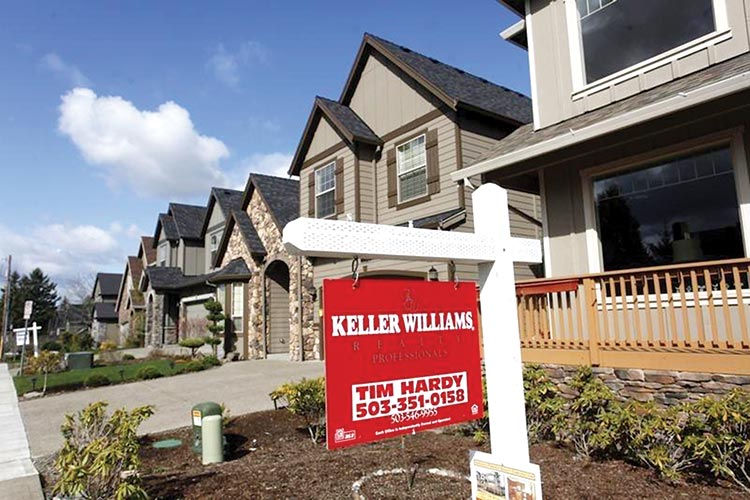US home sales surge to highest level in 11 months

Homes are seen for sale in the northwest area of Portland, Oregon, US. Reuters
The National Association of Realtors (NAR) said existing home sales jumped 11.8 per cent to a seasonally adjusted annual rate of 5.51 million units last month.
That was the highest since March 2018 and well above analysts’ expectations of a rate of 5.1 million units. The one-month percentage change was the largest since December 2015. January’s sales pace was revised slightly lower.
February’s surge came as mortgage rates fell following signals from the Federal Reserve that it was no longer eyeing rate hikes. Several years of rising rates had put a brake on parts of the US housing market in 2018.
“It’s quite a powerful recovery that’s taking place,” said Lawrence Yun, chief economist with the National Association of Realtors.
Still, the number of sales in February was 1.8 per cent lower than a year ago.
The US housing market has also been held back by land and labour shortages, which have led to tight inventory and more expensive homes.
The PHLX Housing Index extended losses following the release of the figures although its decline was less steep than the broader stock market. The median existing house price increased 3.6 per cent from a year ago to $249,500 in February. Existing home sales rose in three of the country’s four major regions and were unchanged in the Northeast.
There were 1.63 million previously owned homes on the market in February, up from 1.59 million in January.
At February’s sales pace, it would take 3.5 months to exhaust the current inventory, down from 3.9 months in January. A supply of six to seven months is viewed as a healthy balance between supply and demand.
Meanwhile the US manufacturing activity unexpectedly cooled in March, a troubling sign for the economy although the housing market showed signs lower interest rates were giving it a boost.
Financial data firm Markit’s purchasing managers index for US manufacturing fell to 52.5 in March, its lowest level since June 2017. Both new orders and output softened.
Analysts polled by Reuters had expected the gauge to strengthen to 53.6 from 53.0 in February. Readings above 50 point to growth in the sector.
The slowdown in US manufacturing is part of a global trend in which international trade tensions appear to be leaving their mark on factory output. Markit also released PMI reports showing factory activity contracted in the eurozone and in Japan.
The reports helped push the spread between three-month Treasury bills and 10-year note yields to invert for the first time since 2007. The inverted yield curve is widely understood to be a leading indicator of recession. US stock prices also fell.
If the US were to fall into recession, some economists have argued that the federal government’s giant budget deficit could limit its ability to support growth.
The federal government posted a $234 billion deficit in February, the widest monthly deficit on record, Treasury data showed in a monthly report.
The fiscal situation has deteriorated following a large tax cut enacted in 2018, with the government running nearly $1 trillion into the red during the 12 months through February.
Already, signs of a global slowdown have played a significant role in the Federal Reserve’s signaling in recent months that it will pause and possibly end its interest rate hiking cycle, which began in 2015.
Some economists are concerned the Fed may have already lifted rates too high. The US housing market spent much of 2018 in a dismal state, held back by higher rates.
On Friday, however, a report from the National Association of Realtors showed US home sales surged in February to their highest level since March 2018.
Existing home sales jumped 11.8 per cent to a seasonally adjusted annual rate of 5.51 million units last month, the NAR said. That was above analysts’ expectations and could be a sign that the Fed’s pause on rate hikes is helping home sales.
“Declines in mortgage rates are beginning to provide some support,” economists at Oxford Economics said in a note to clients. However, the US economy is already slowing, partly due to the fading of a major fiscal stimulus in 2018.
The New York Federal Reserve said one of its forecasting models pointed to a 1.29 per cent growth rate in the first quarter. That’s well below the 2.9 per cent growth clocked in 2018, which was just below US President Donald Trump’s 3 per cent growth target.
Reuters



